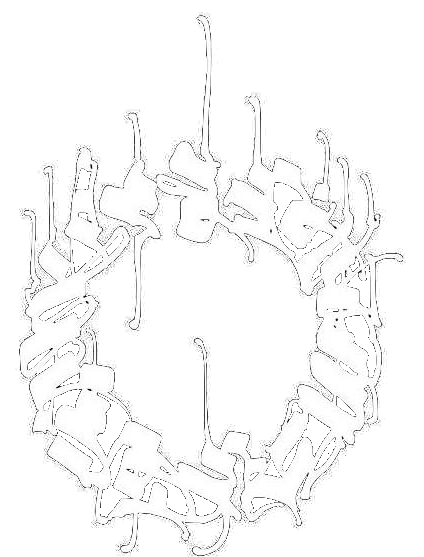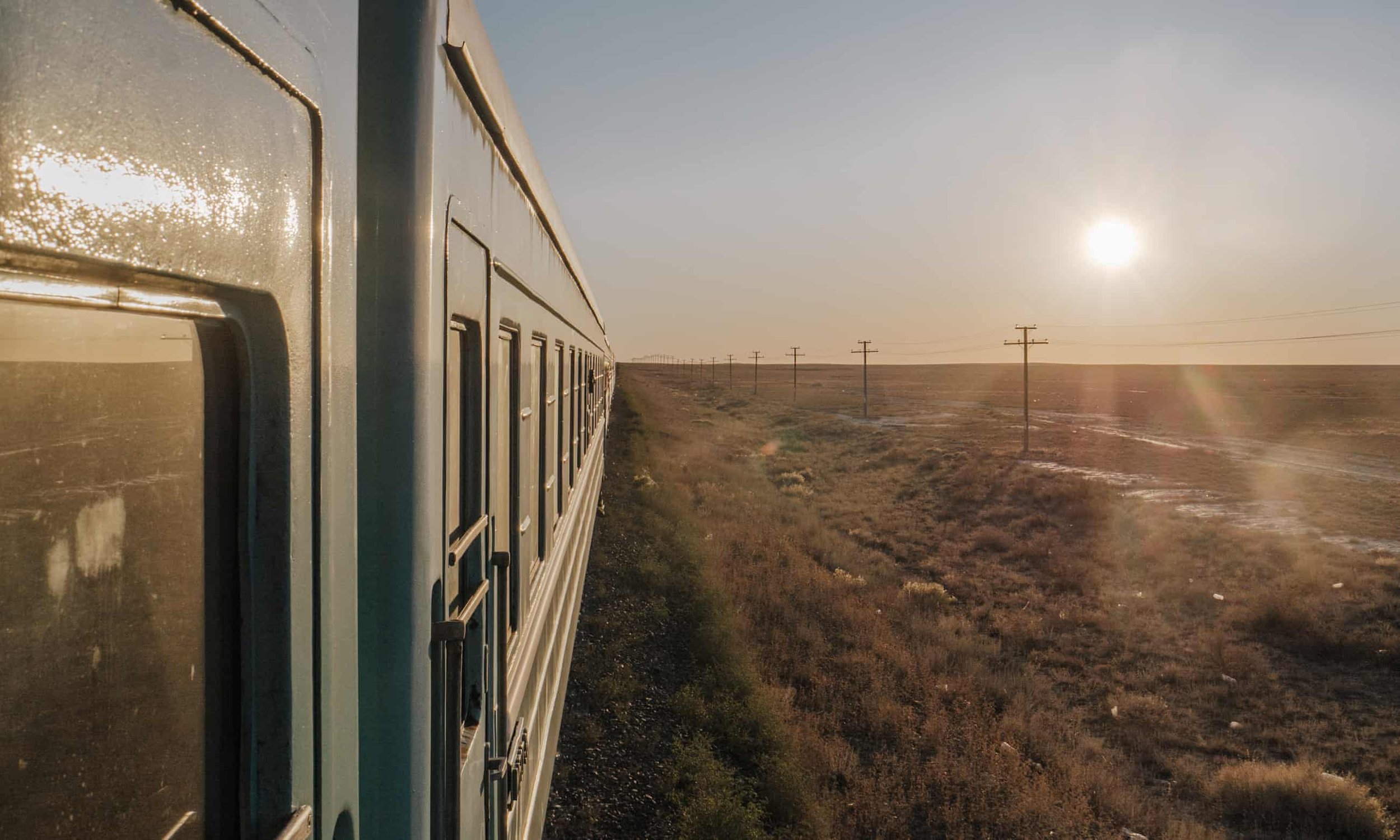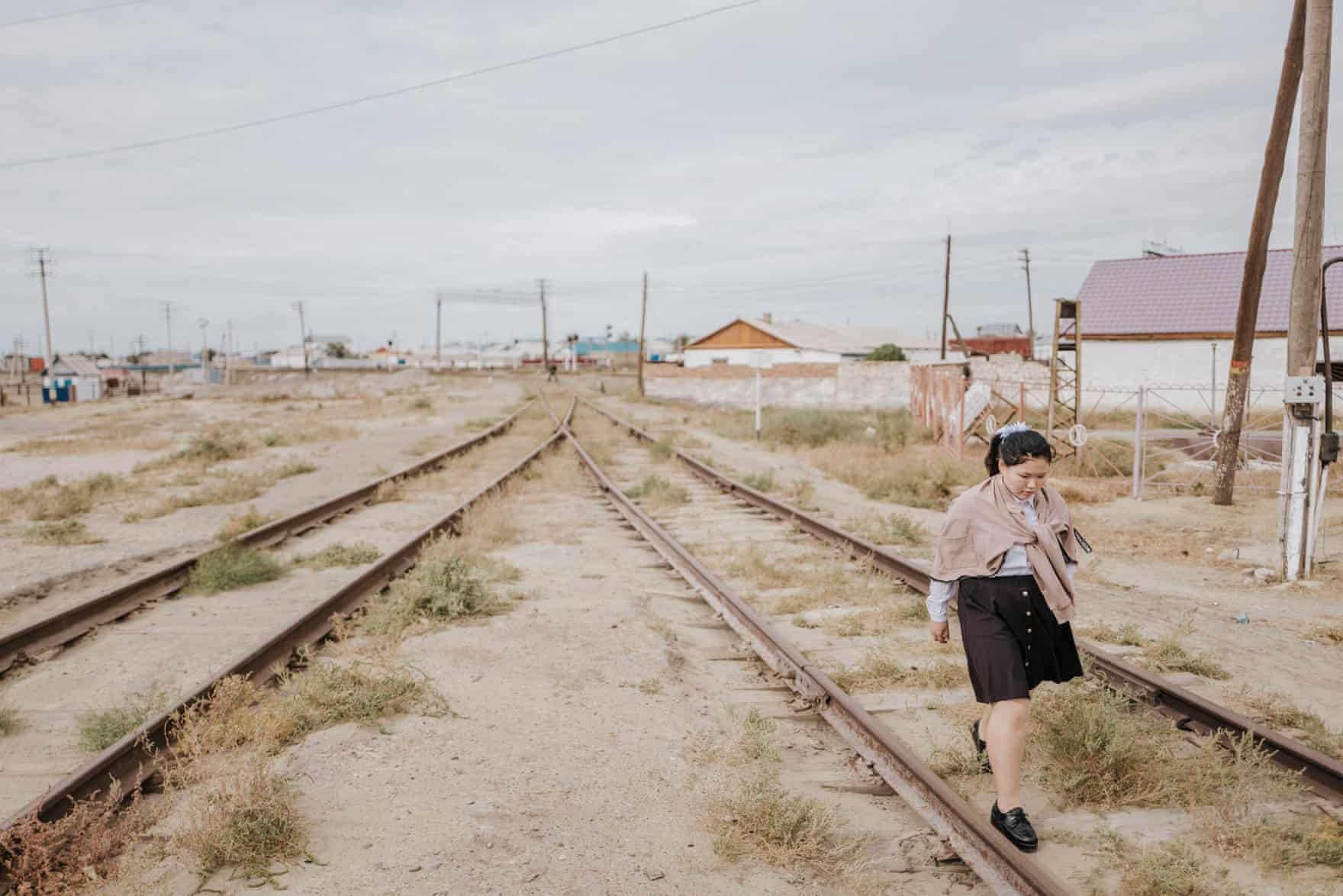Across Kazakhstan by rail
Mario Heller, 2021
Travelling is an essential element and source of inspiration for my work. From all the types of transport in which one can travel, the train is probably my favourite. As with the airplane, you are in a kind of no-zone, moving between territories. It is ideal for meeting people and working, but also to exercise your imagination and making new thought connections, stimulated by the fleeting images.
The train connects people. You are much more inclined to meeting persons on a long-distance train trip than on an airplane. I very much hope that it will become once again the preferred travelling method for a cleaner, greener future. It gives you many more opportunities to get to know different characters and hear diverse stories that help you to construct a small mosaic of the land you are visiting.
There is also a romanticism to the train travel that I really enjoy. The possibility to see the open landscapes and the peculiarities of each city and town we cross, and how it makes us reflect on a multitude of subjects while we move in a sitting position.
Photographer Mario Heller did an interesting photo essay, telling of his experience crossing Kazakhstan by train in three weeks.
/
“Outside the windows, the monotonous steppe passes under a milky sky. “On a train journey, your thoughts are completely free,” Mayra says, leaning back with pleasure. Even as a child, she was often taken along by her parents to a family reunion thousands of kilometres away.
“In the past, there was a community between travellers. People shared their secrets with strangers. I started penpal relationships with some people; some continue to this day. Today, most travellers lie there like mute fish, staring at their smartphones 24/7.”
“(…) For our journey, stopovers are rather inconvenient – we usually rest for about 12 hours in run-down hotels near the stations before boarding another train. Most cities are not particularly attractive, with the exception of the former capital Almaty, which is extraordinarily green and surrounded by breathtakingly beautiful mountain scenery.
Nur-Sultan, the capital named after the recently deposed president, looks more like the playground of a megalomaniac despot. In the middle of the desert, futuristic buildings are lined up with dilapidated prefabricated buildings. The country’s fascination lies in the many scenic highlights – which we unfortunately only see passing by the window”.
Among the country‘s 48,000 or so lakes is the Aral Sea, which is now almost dried up. It represents one of the greatest environmental disasters of recent decades, caused by the large-scale cultivation of cotton during the Soviet era. - MH, 2021
Aliya (20) - “This train is now only a few stops from its destination. Most of the time the train runs on time, but every now and then it makes extraordinary stops, for example when people don‘t live near a stati- on. It‘s the same in real life: you should always be ready to stop at the right time, even if it seems an unusual halt. There‘s never a direct route to your destination without stopping in between, just as a train never goes straight to the terminal”. - MH, 2021
The many stops of the long-distance trains always entice with a wide range of small grocery stores or even whole snack stands. Food is on sale here until late into the night. - MH, 2021
Kamilla (19) “In Kazakhstan, it does not makes sense to follow politics. Everything is ruled by one man. Therefore, I am concentrating myself fully on my computer science study in Nur-Sultan. This is the future of humanity. Still, I am very priviliged to be able to study in a good university. Compared to young people in Europe, we are maybe much less educated in average, but we are much more attached to our family and way more patriotic. I live in a typical Kazakh family: My parents think everything is good and we have to thank god for the great politicians and I often find myself debating with them.”.
The photographer’s reflection on the nature of contemporary Kazakhstan’s society and the act of travelling can be read here.
The full project Kazakhstan Time Travel.
Mario Heller is a Berlin-based Swiss photographer whose work focuses on the relationship between our social structures and cultural backgrounds. You can get to know more of his work on his website.




